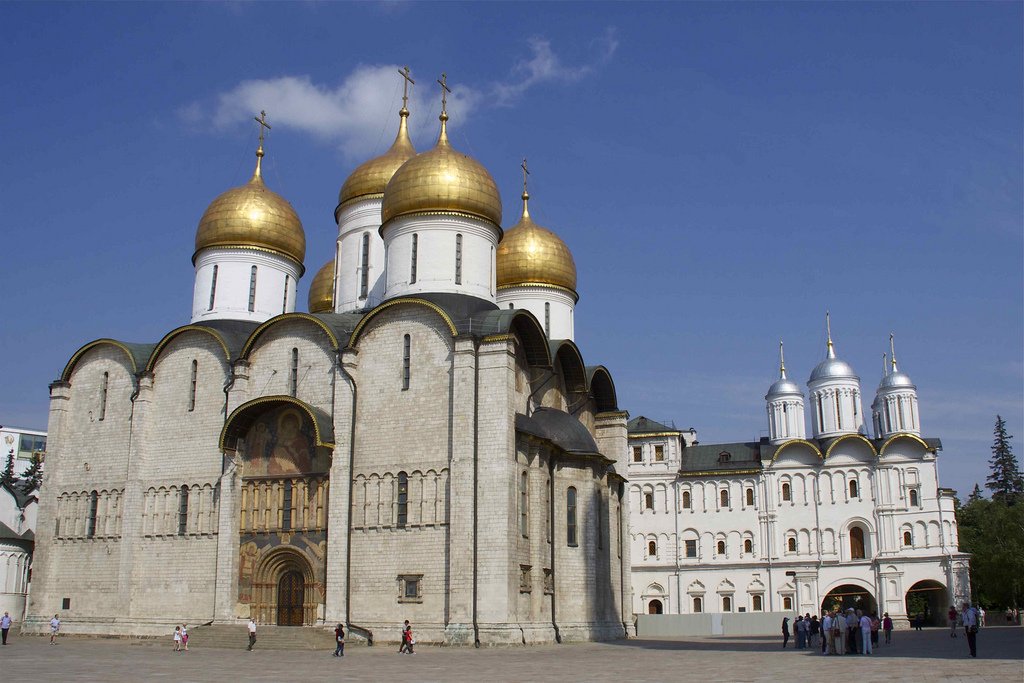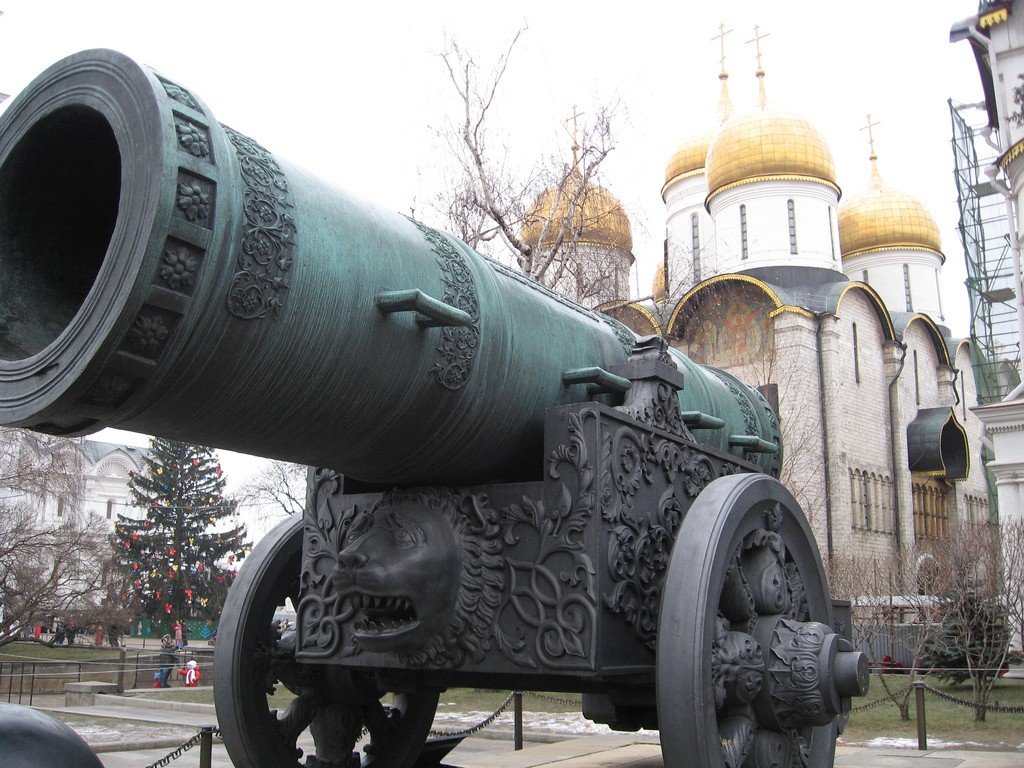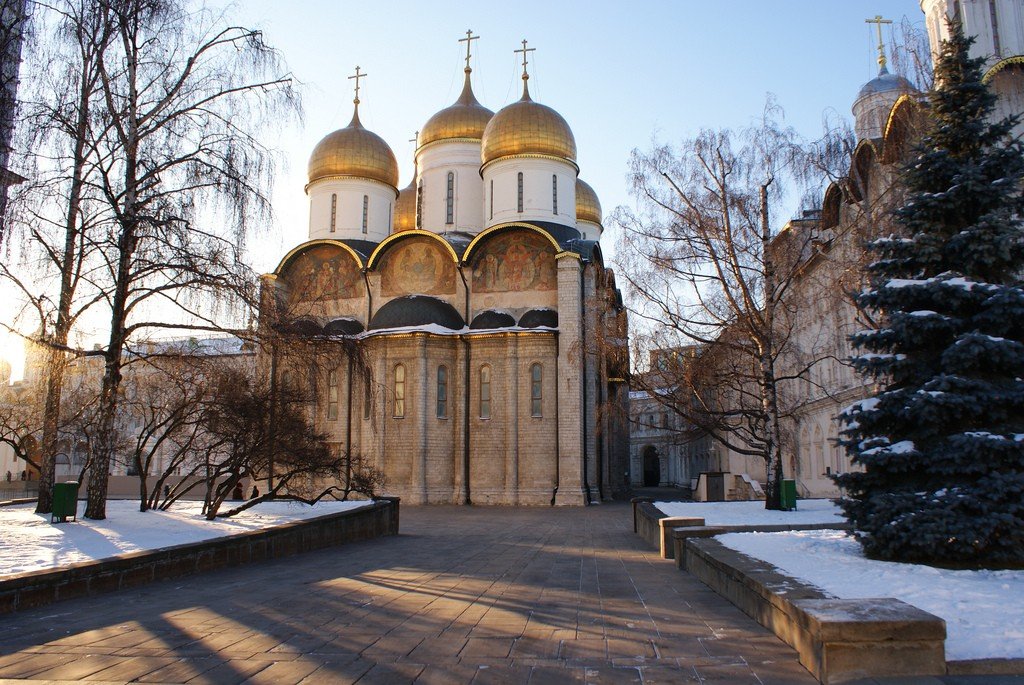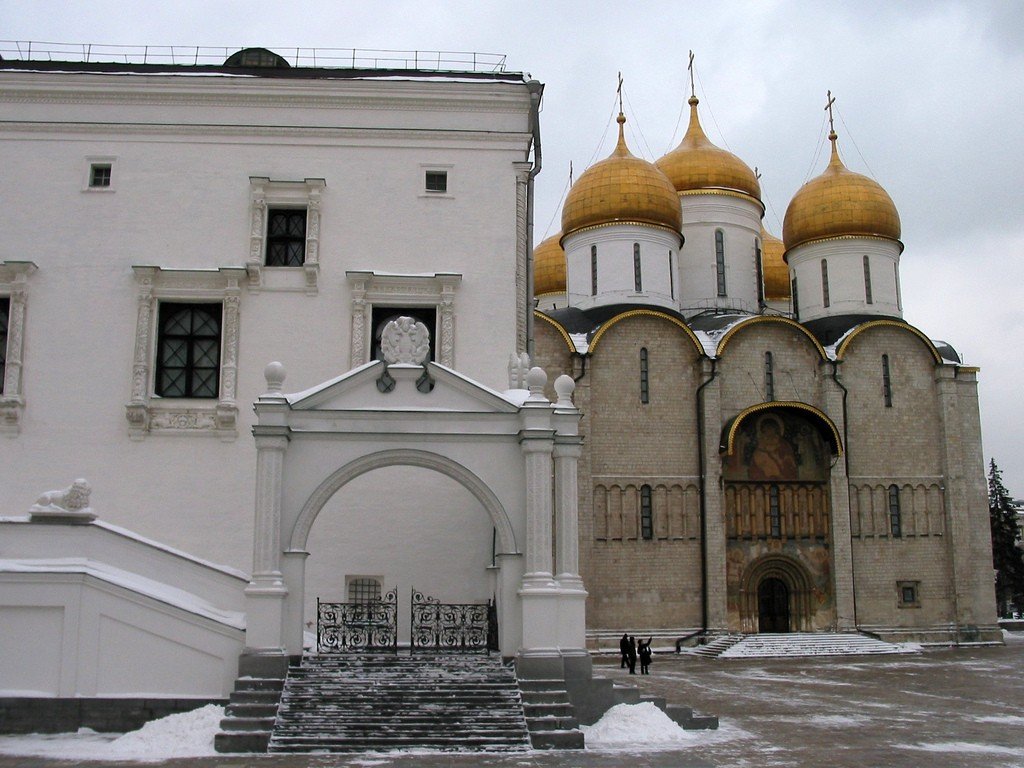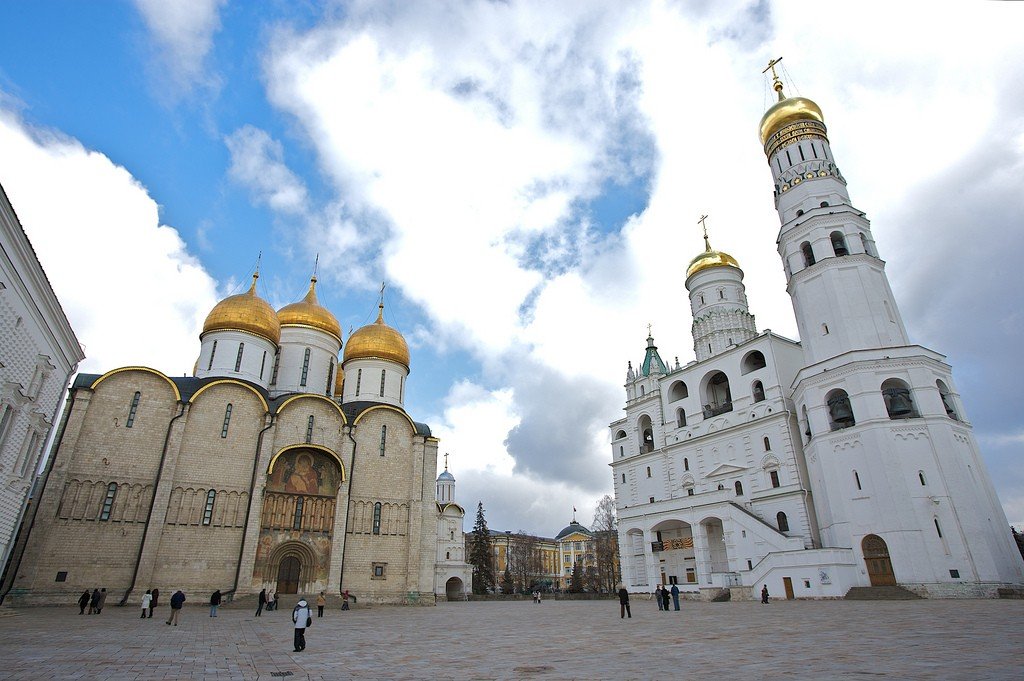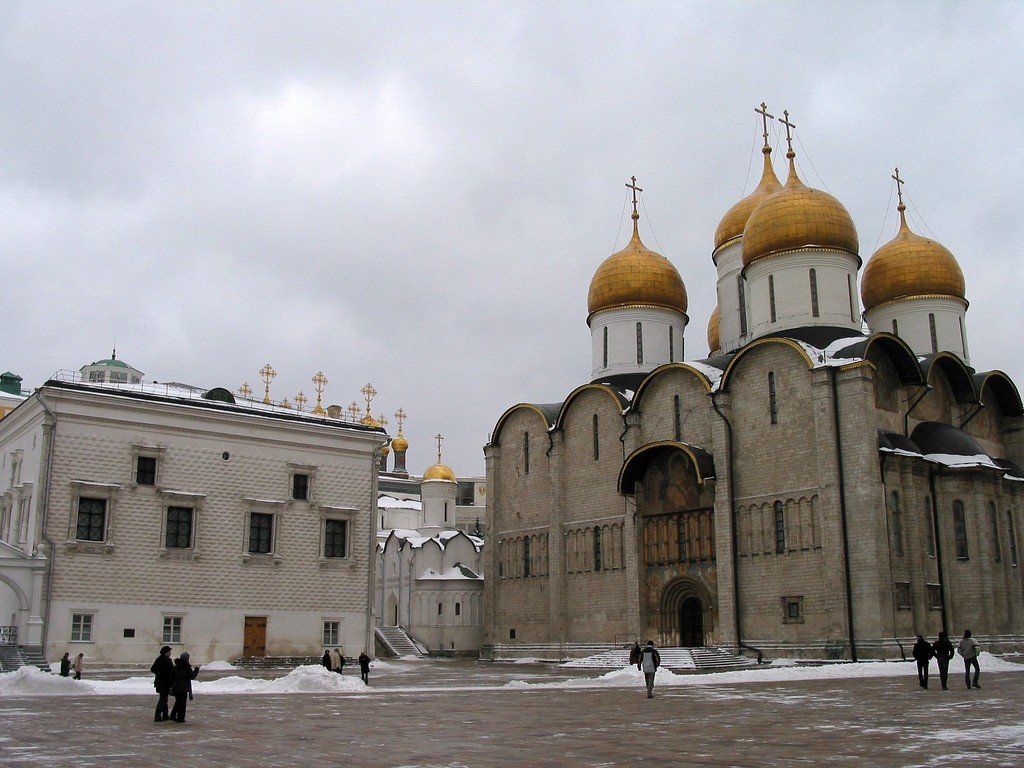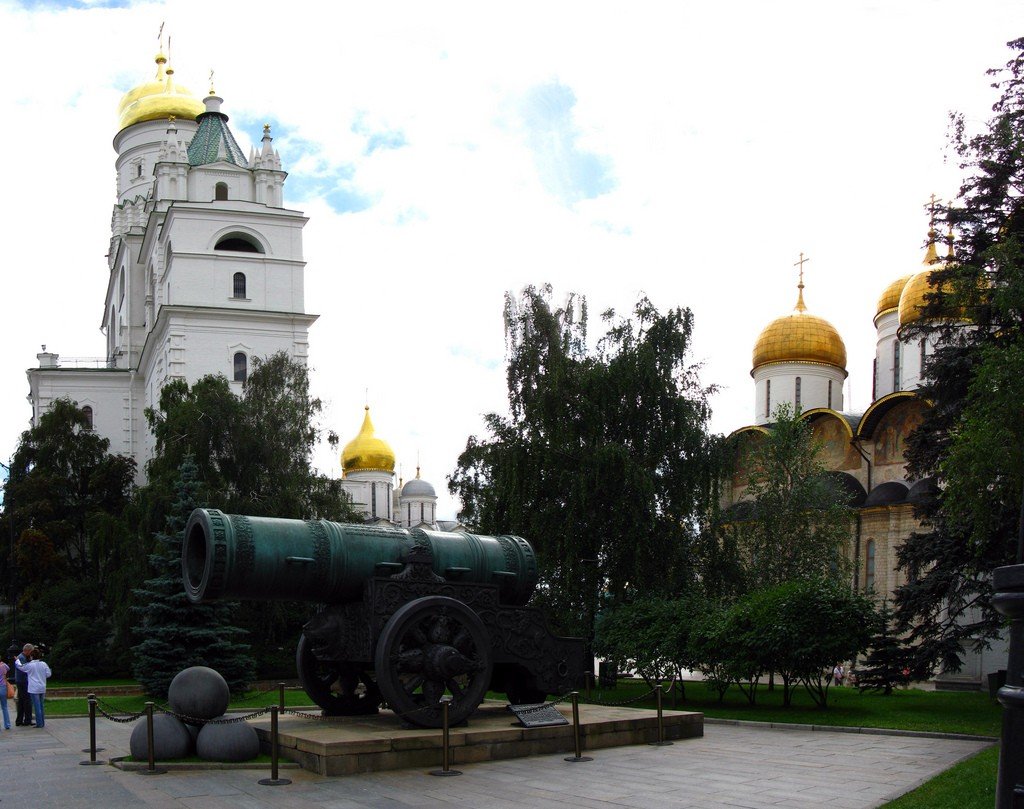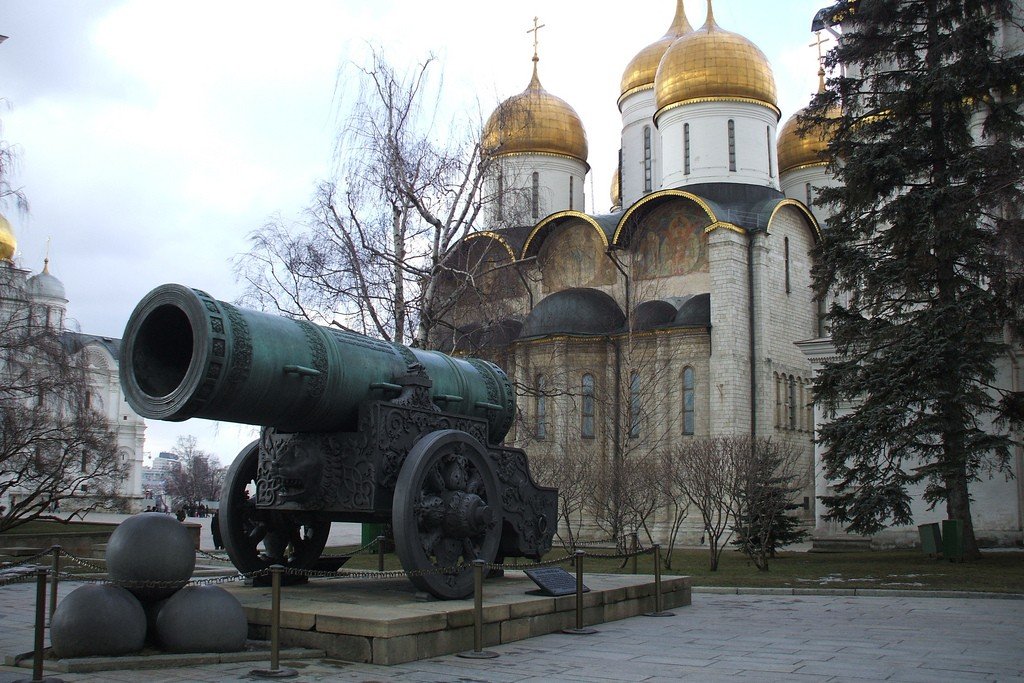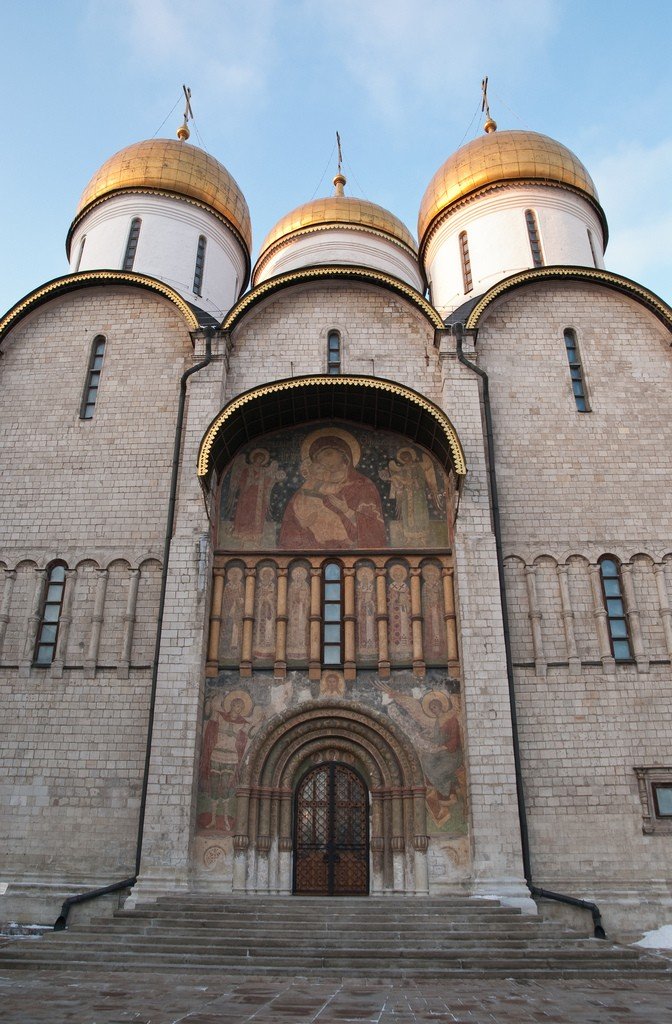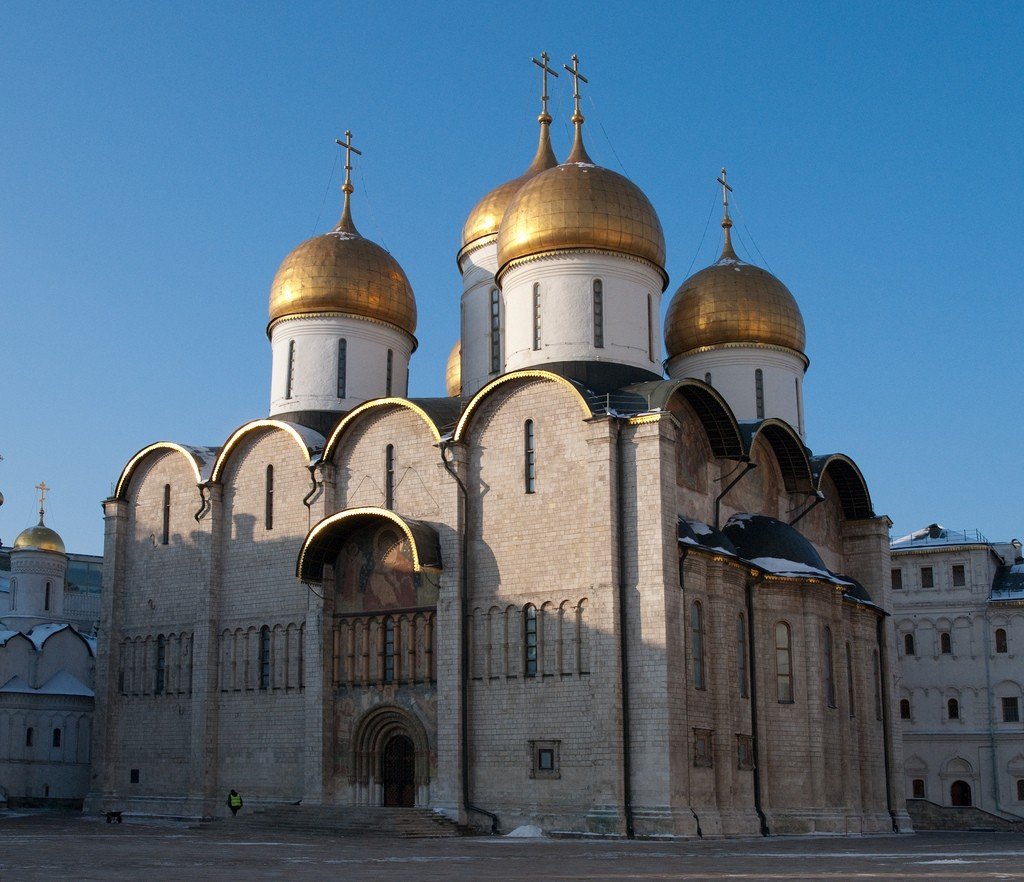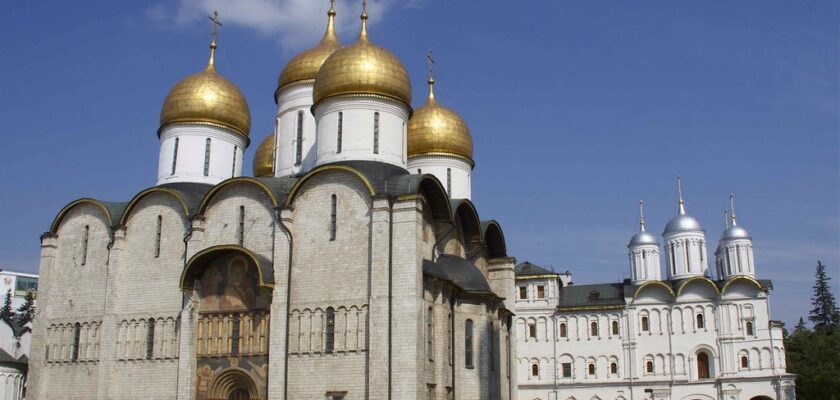Assumption Cathedral of the Moscow Kremlin
Having finished with the independence of Novgorod, Moscow turns from an inconspicuous princely capital subordinate to the Tatar khan into the center of a huge state. Having become the owner of vast and rich Novgorod possessions, the Grand Duke of Moscow Ivan III feels himself an autocratic ruler. All that remained was to transform the poor appearance of the capital itself. By the early 1470s, Moscow had only three stone churches built by Ivan Kalita. The main of them – the Uspensky Cathedral – had become so dilapidated that its vaults had to be supported by thick logs. They turned for help to the Italian architect Aristotle Fioravanti, who undertook the work, but first of all he tore down the walls to the ground. The result was a huge temple, which was inferior in size only to the Vladimir Cathedral. The Uspensky Cathedral served as the burial place of almost all Moscow saints. It repeatedly suffered from fires, was renewed and restored. In the St. Petersburg era, beginning with Peter II, Russian emperors continued to be crowned in the cathedral. During the Patriotic War of 1812 the cathedral was desecrated and looted by French soldiers, although the most valuable relics were evacuated to Vologda. In 1813 the cathedral had to be re-consecrated. In August 1917 it hosted the Local Council of the Russian Orthodox Church, which in October decided to restore patriarchy in Russia. In Soviet times the church was closed for services and a museum was organized in it. In 1960 the Assumption Cathedral was transferred to the Ministry of Culture of the USSR. Until now, only on some days it is used for divine services. Currently, the temple is called the Patriarchal Cathedral.
